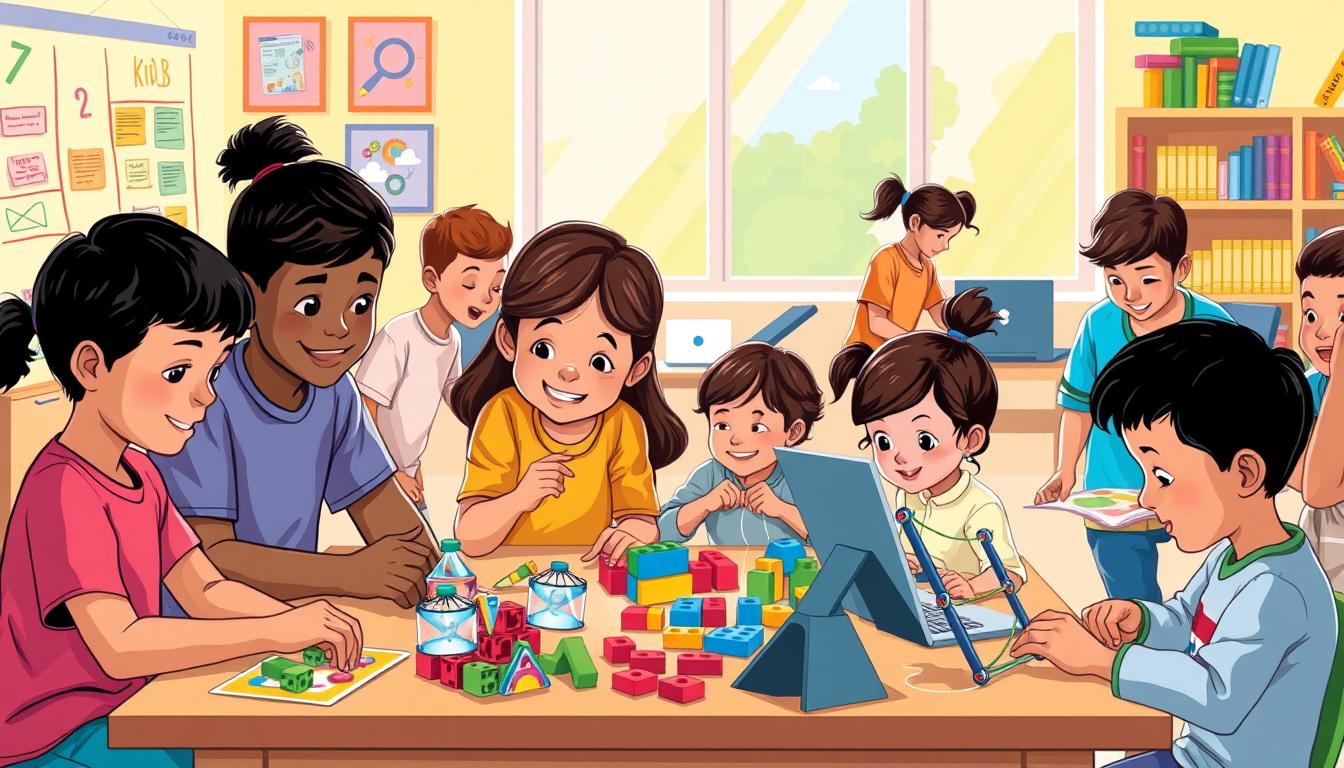Problem-Solving Activities for Kids
Did you know the World Economic Forum predicts that critical thinking and problem-solving will remain the #1 workforce skills through 2030? These abilities aren’t just for adults—they’re the foundation for helping children thrive in a fast-changing world. By nurturing these talents early, we prepare young minds to adapt, innovate, and lead.
This guide shares creative, hands-on methods to turn everyday moments into growth opportunities. From preschoolers sorting shapes to teens tackling design challenges, each exercise strengthens logic, teamwork, and curiosity. Best part? Most require little more than household items and a dash of imagination.
Educators and parents agree: kids learn best when they’re excited and engaged. That’s why every idea here doubles as a fun experience. Whether it’s building spaghetti towers or decoding riddles, children won’t just solve puzzles—they’ll build resilience and discover the joy of overcoming obstacles.
Key Takeaways
- Future-ready skills like analysis and creativity rank highest in global workforce reports
- Activities grow with children, from toddler-friendly games to teen STEM projects
- Collaborative tasks teach communication alongside critical thinking
- Minimal prep needed—most tools are already in your home or classroom
- Regular practice helps kids see challenges as solvable puzzles
Introduction to Problem-Solving for Kids
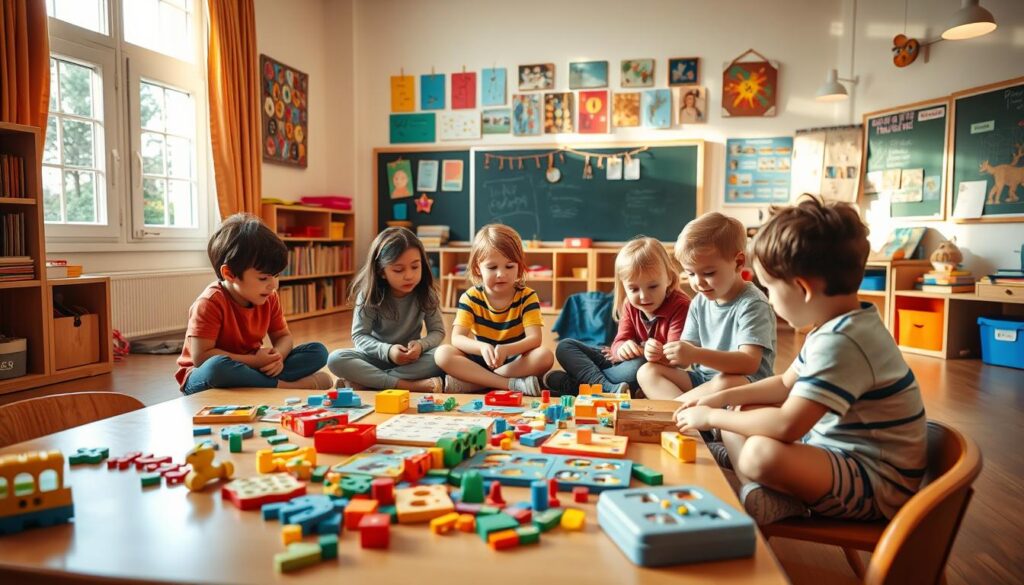
What makes a child’s approach to challenges different from an adult’s? Young minds naturally explore, test, and adapt—qualities that form the bedrock of lifelong learning. Structured exercises turn these instincts into tools for navigating complex situations.
Understanding the Role of Critical Thinking
Kids build reasoning skills by breaking down tasks into smaller steps. For example, deciding how to build a stable tower with blocks teaches cause-and-effect relationships. Over time, they learn to weigh options and predict outcomes.
Regular practice helps children spot patterns and ask better questions. A study of classroom methods found students who regularly analyze scenarios from multiple angles improve decision-making speed by 40% compared to peers using rote memorization.
How Activities Inspire Creativity and Collaboration
Group challenges like designing marble runs or solving mystery boxes require teams to merge ideas. This process often leads to unexpected breakthroughs—a cardboard tube becomes a bridge, or mismatched supplies spark inventive fixes.
| Approach | Individual Work | Group Work |
|---|---|---|
| Idea Generation | 1-2 solutions | 5+ solutions |
| Perspectives Considered | Single viewpoint | 3-4 viewpoints |
| Solution Diversity | Limited | High |
Through shared challenges, children discover that combining strengths leads to stronger results. They practice explaining ideas clearly while learning to value others’ contributions—skills that translate to real-world success.
Why Problem Solving is Essential for Students
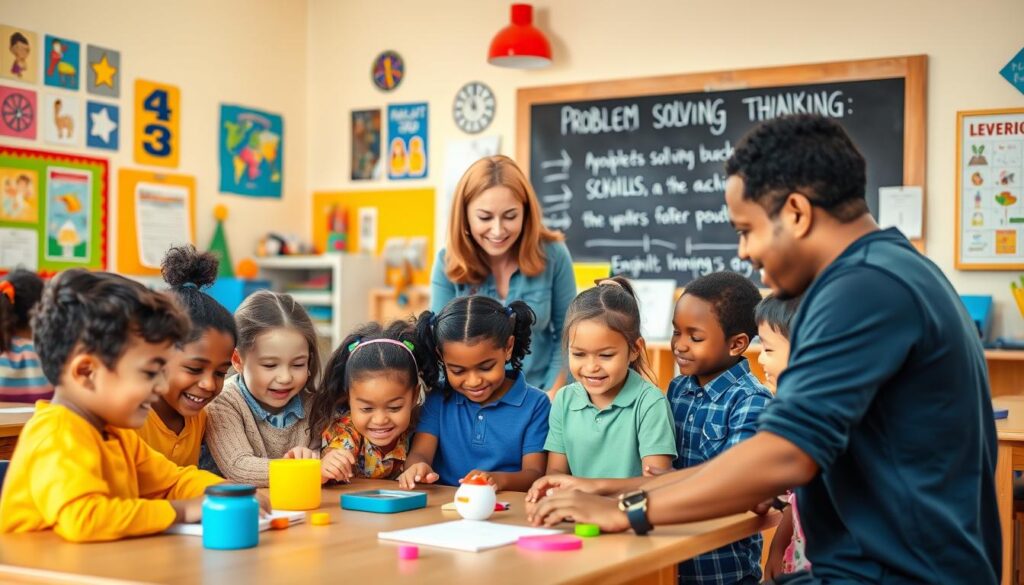
The World Economic Forum’s 2020 Future of Jobs Report reveals a striking truth: problem-solving skills now rank higher than technical expertise in employer demand. Students who master these abilities gain tools to navigate academic hurdles, social dynamics, and tomorrow’s workforce demands.
Building Confidence Through Challenges
Structured challenges act like mental gym equipment. When children solve science experiments or crack math puzzles, they collect small wins. These victories build belief in their abilities—a 2021 study showed students who tackled weekly problems improved confidence scores by 58% compared to peers.
Gradual difficulty increases prevent overwhelm. Start with simple riddles, then advance to open-ended design tasks. This progression teaches kids to embrace uncertainty while trusting their reasoning.
Enhancing Teamwork and Communication Skills
Group challenges turn classrooms into innovation labs. Picture students debating bridge designs or negotiating story solutions. Through these interactions, they learn to express ideas clearly and value diverse perspectives.
| Skill | Individual Practice | Group Practice |
|---|---|---|
| Confidence Building | Gradual mastery | Peer validation |
| Communication | Internal dialogue | Active listening |
| Solution Diversity | Limited approaches | Cross-pollinated ideas |
Collaborative tasks mirror real-world dynamics. Employers report teams with strong communication solve complex issues 3x faster than groups lacking these skills. Early practice creates lifelong advantages.
Overview of Problem-Solving Strategies
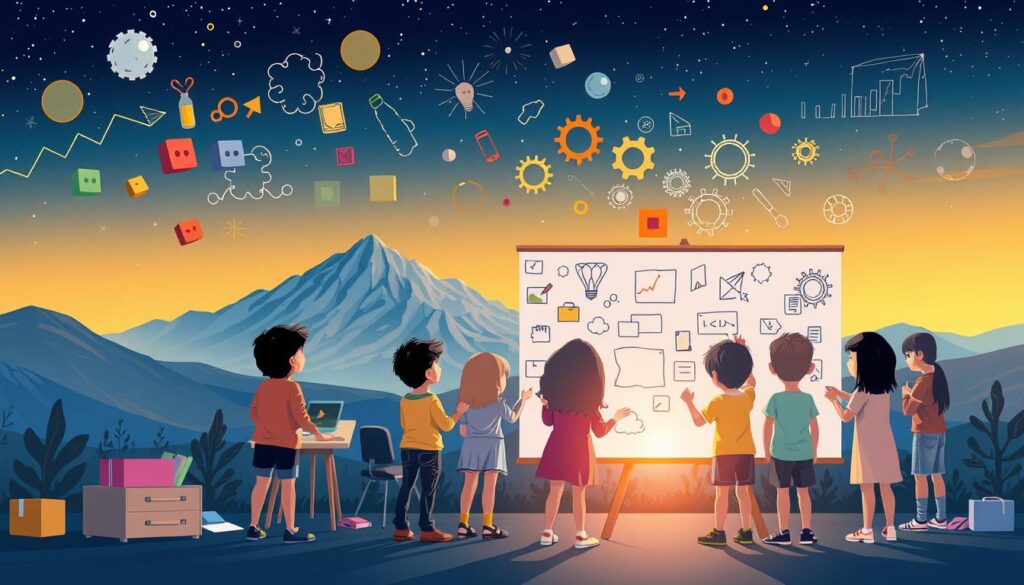
Structured approaches turn everyday challenges into skill-building opportunities. By breaking down complex situations into manageable steps, children learn to navigate obstacles with clarity and confidence.
Defining Problems and Generating Solutions
Great solutions start with asking the right questions. Teach kids to pause and analyze what’s really happening before reacting. Simple prompts like “What’s the core issue?” or “What details matter most?” sharpen their ability to separate symptoms from root causes.
Once a problem is clearly defined, brainstorming begins. Encourage wild ideas first—quantity over quality. A study of classroom methods found groups generating 10+ ideas per challenge solved puzzles 30% faster than those fixated on “right answers.”
| Strategy Type | Best For | Key Questions |
|---|---|---|
| Analytical | Math/logic puzzles | “What patterns exist?” “What rules apply?” |
| Creative | Open-ended challenges | “What if we tried…?” “How else could this work?” |
Evaluation comes next. Kids compare options using criteria like feasibility and impact. This step teaches trade-offs—maybe the fastest solution isn’t the most durable. Role-playing real-world scenarios helps them practice adapting when plans hit snags.
Finally, implementation becomes a learning loop. Did the solution work? What adjustments are needed? This process builds resilience—kids discover that even imperfect attempts provide valuable data for next steps.
Problem-Solving Activities for Elementary Students
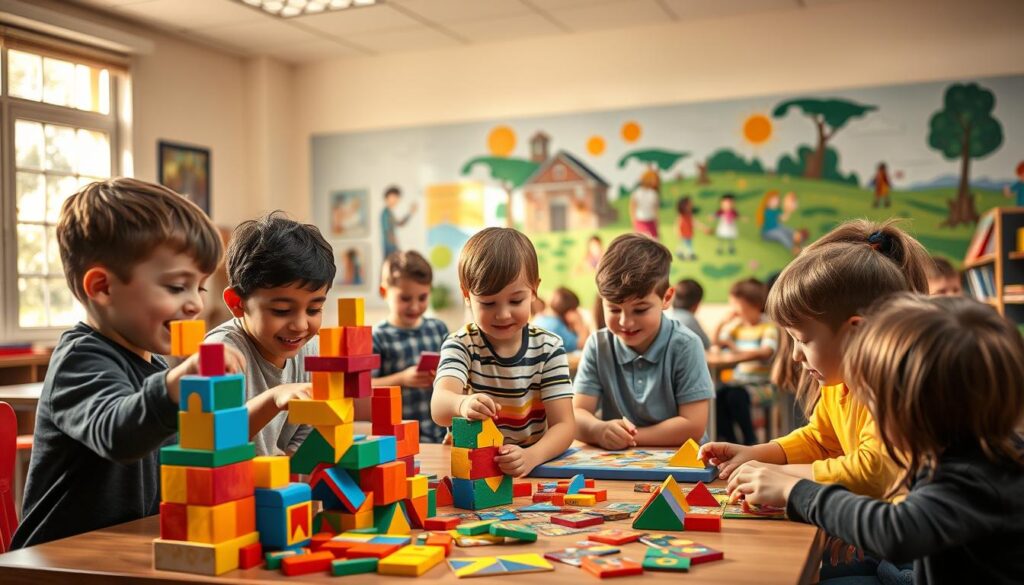
Elementary classrooms buzz with energy when lessons feel like play. These hands-on methods turn young learners into curious detectives and creative thinkers, using everyday items to sharpen essential skills.
Interactive Mystery and Detective Games
Fill a bag with 5-10 clues about famous landmarks or animals. Students pull one card at a time, piecing together details like detectives. Was it the Egyptian pyramids? A polar bear’s habitat? This game teaches logical connections—a crumpled paper “map” might reveal a historical event’s location.
Teams debate possibilities, learning to separate facts from assumptions. A study showed classrooms using mystery activities improved inference skills by 34% compared to textbook-only groups.
Creative Brainstorming with “Help ’em Out” and “What If…”
During storytime, pause at a character’s dilemma. Ask: “How would you help?” Students generate a list of solutions—from practical to wild. ChatGPT can create age-appropriate “what if” scenarios: “What if your friend took your snack?”
These discussions build ethical reasoning. One class debated moving a fragile object across the room using only elbows—a problem requiring teamwork and spatial awareness. Younger kids focus on simple steps, while older students analyze cause-and-effect chains.
Wrap up with building challenges using straws or cups. No fancy kits needed—just imagination and trial-and-error. After three tries, most groups discover stronger structures through shared ideas.
Problem-Solving Activities for Middle School
Middle school students thrive when lessons mirror real-world challenges. Structured tasks push them to analyze complex situations, test theories, and refine strategies—skills that bridge classroom learning with life beyond textbooks.
Survival Scenarios and Scavenger Hunts
Imagine students stranded on a fictional island with limited resources. Teams must prioritize needs, build shelters from classroom materials, and negotiate roles. This activity sharpens decision-making under pressure while fostering leadership qualities.
Scavenger hunts get a modern twist with QR codes or cipher wheels. Clues require decoding historical facts or solving math puzzles to unlock locations. A study found timed hunts improve spatial reasoning by 22% compared to traditional methods.
Escape Rooms and Tower Challenges
Transform your classroom into a themed escape room. Students crack riddles linked to curriculum topics—like using geometry to open a “treasure chest.” These immersive games teach persistence as groups revise approaches when initial solutions fail.
Tower-building contests with spaghetti and marshmallows reveal engineering principles. Teams track their time and material use, learning to optimize limited resources. After three attempts, most groups double their structure’s height through iterative improvements.
FAQ
What problem-solving activities work best for elementary students?
How do group activities improve communication skills?
Can household items be used for problem-solving games?
Why are survival scenarios effective for middle schoolers?
How do problem-solving activities build confidence?
What’s a simple way to teach problem-solving steps?

Adam Peter is a finance, travel, and automotive writer with over a decade of experience. He creates clear, practical content to help readers manage their money, explore the world with confidence, and make informed decisions about cars and travel gear. His work blends expert insight with real-world usefulness.

